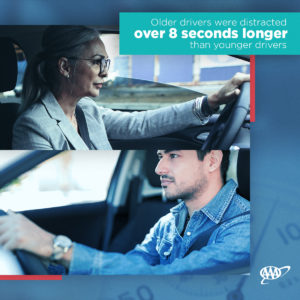Why Aren’t Cars Designed for Seniors?
Do you feel outsmarted by your car? You’re not alone. In a recent National Post article, “Driven to Distraction”, reporter Kristine Owram examines the high tech car movement and found that the “smart” features designed to keep us safe and make driving a pleasurable experience, are not that easy to navigate. It’s not a lot of fun when the car is ringing and pinging and you don’t know what to do. “The complexity of in-vehicle technology is staggering — a typical new car comes with 100 million lines of code, more than a Boeing Co. 787 jet — but it sometimes feels as if that technology is working at cross purposes.” How can motorists keep up with auto technology that is speeding ahead of our knowledge and ability to drive?

University of Utah carried out the study, Age-Related Differences in the Cognitive, Visual and Temporal Demands of In-Vehicle Information Systems, for the AAA Foundation for Traffic Safety in 2018.
The American Automobile Association (AAA) Foundation for Safety Traffic published its research on Age-Related Differences in the Cognitive, Visual and Temporal Demands of In-Vehicle Information Systems last month. Drivers were tested on their ability to operate the infotainment or In-Vehicle Information Systems (IVIS) on six 2018 model vehicles: calling or dialing, text messaging, programming music or programming navigation. “The complex design of the technology created increased visual and cognitive demand for older drivers.” As a result, they were distracted eight seconds longer than their younger counterparts, on average.
The AAA is advocating for changes to meet the safety and comfort needs of aging drivers that would be universally beneficial. “…Simplifying software menus, removing complex center console controls, and positioning system controls to allow drivers to keep their eyes on the road, would better meet the needs of older adults and make the systems safer for all drivers.”
Companies like Toyota Canada offer tutorials to learn how to use and understand their car’s programming system, but it doesn’t address the demand for accessible, user-friendly cars. As Edward Henry Steinfeld, gerontologist and co-author of “Universal Design, Creating Inclusive Environments” points out, “Designers need to consider the aging population. The problem is that these (IVIS) systems require people to adapt to them – rather than adjusting themselves to accommodate what people need and want.”
What are the chances that customers will see low-tech options behind the wheel? There are some cars with less intimidating features and gadgets. Consumer Reports rated the top 2018 model vehicles for seniors based on front seat access, visibility, controls and headlights. Auto Trader magazine suggests senior drivers look for minivans or sport utility vehicles that offer high ground clearance to make it easy to get into and out of. Wide footwells, large door access, and full size windows that offer greater visibility are important considerations. Vehicles that suit older drivers offer cross-benefits for other drivers. There are smart options out there.
At Wheelchair in Motion our accessible vans are easy to use. We take the time to show our customers how to operate the ramp, secure the wheelchair, and fasten the seatbelt. With van rentals available in the GTA and many areas of Ontario, including Ottawa, you can book one of our vehicles for a day, a weekend, and more. We are here to assist with your accessible transportation needs. Contact us and we’ll help get you on the road.

